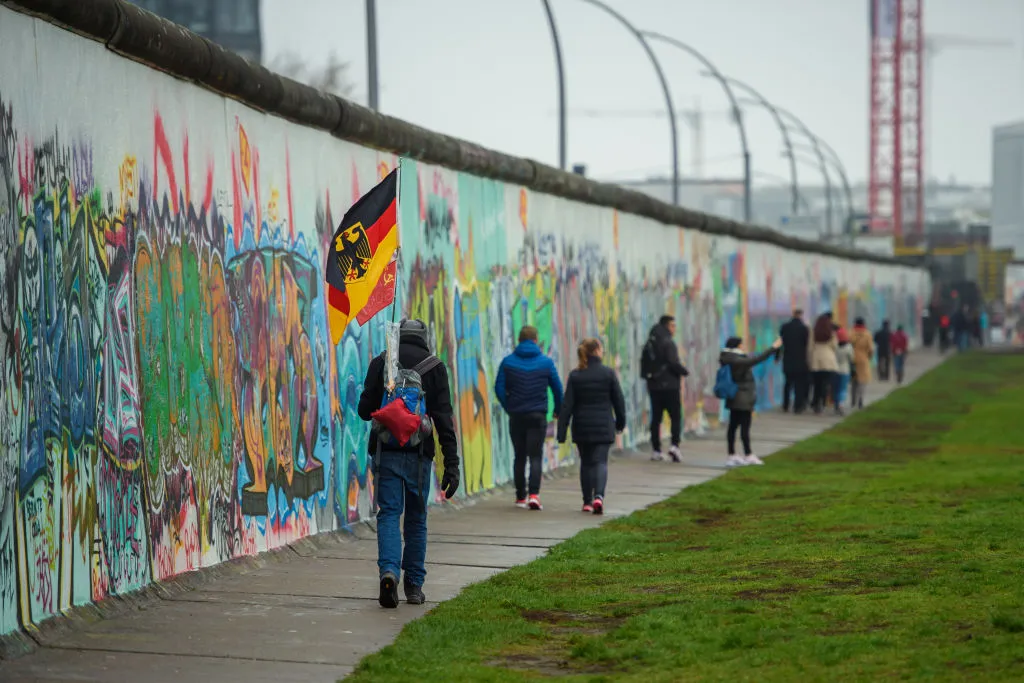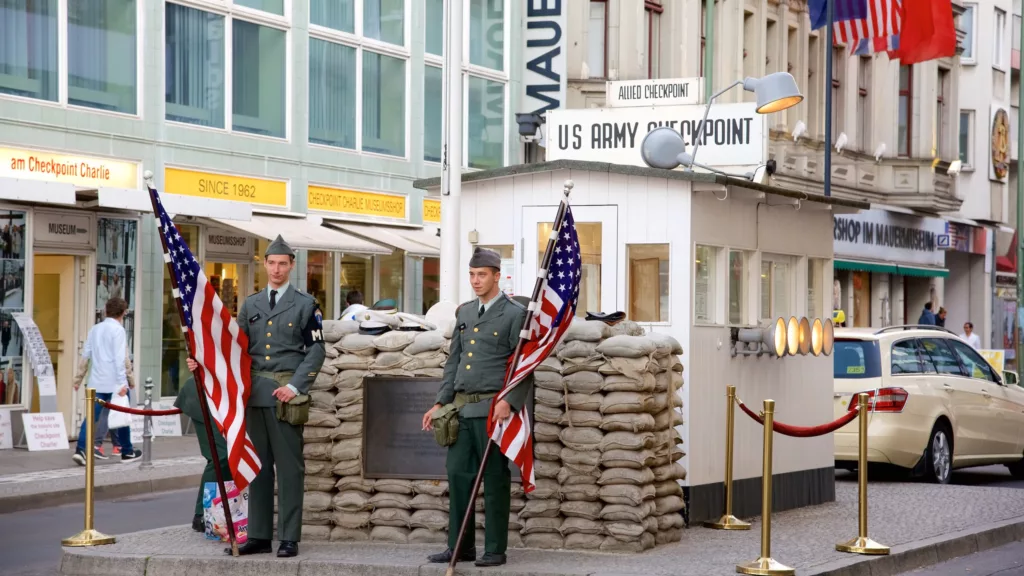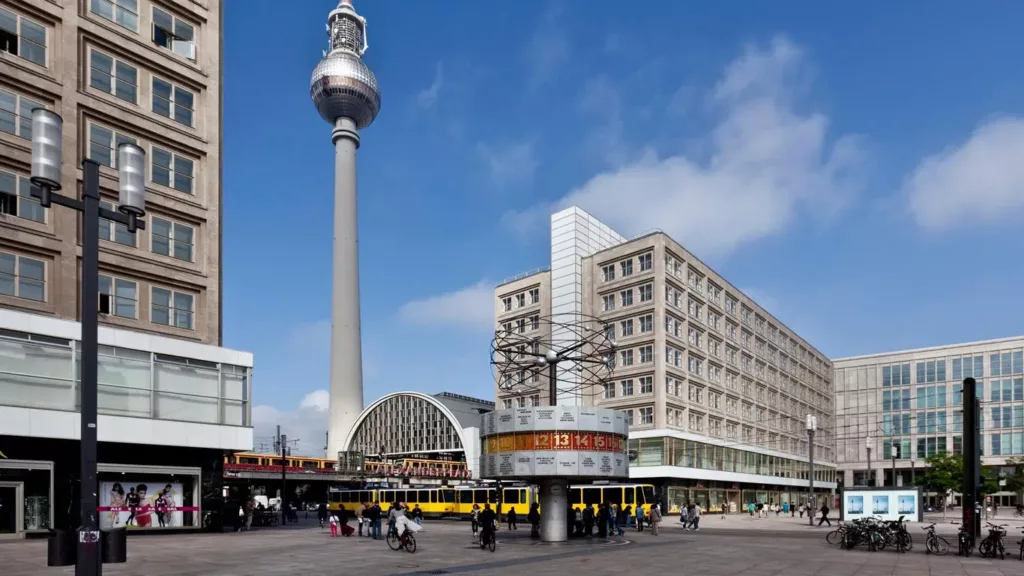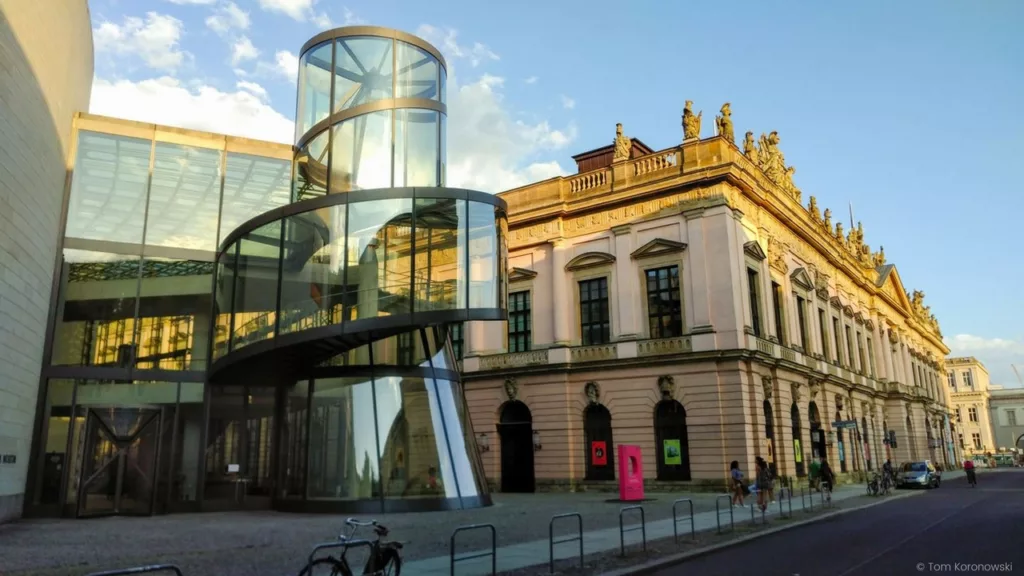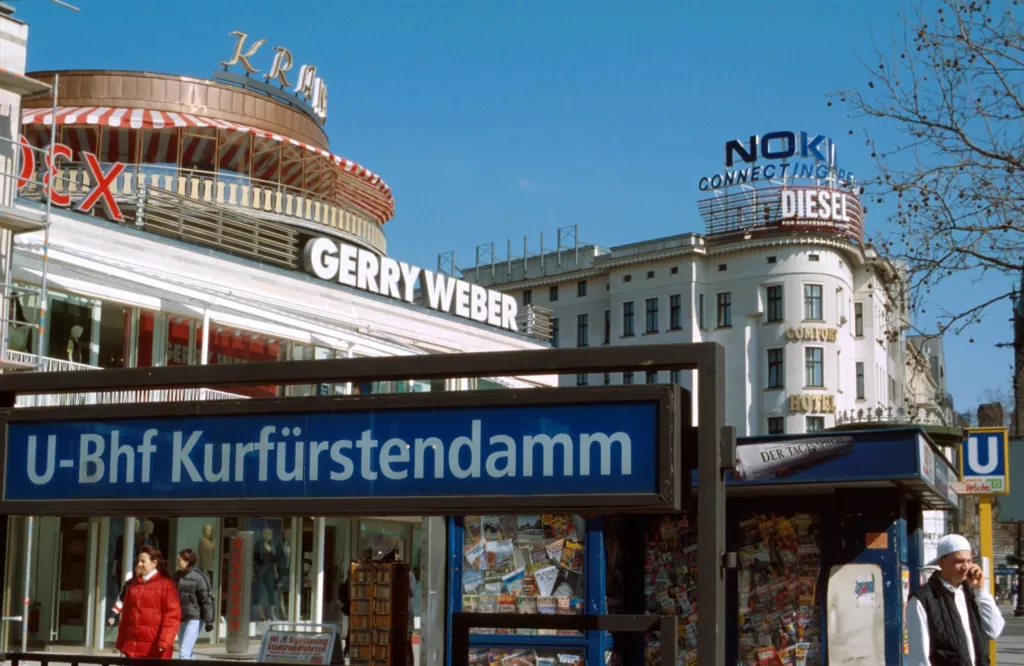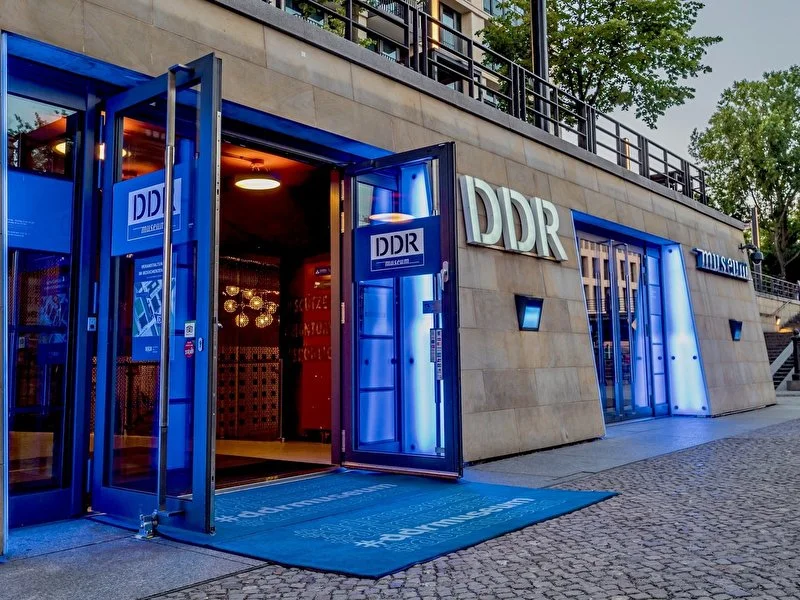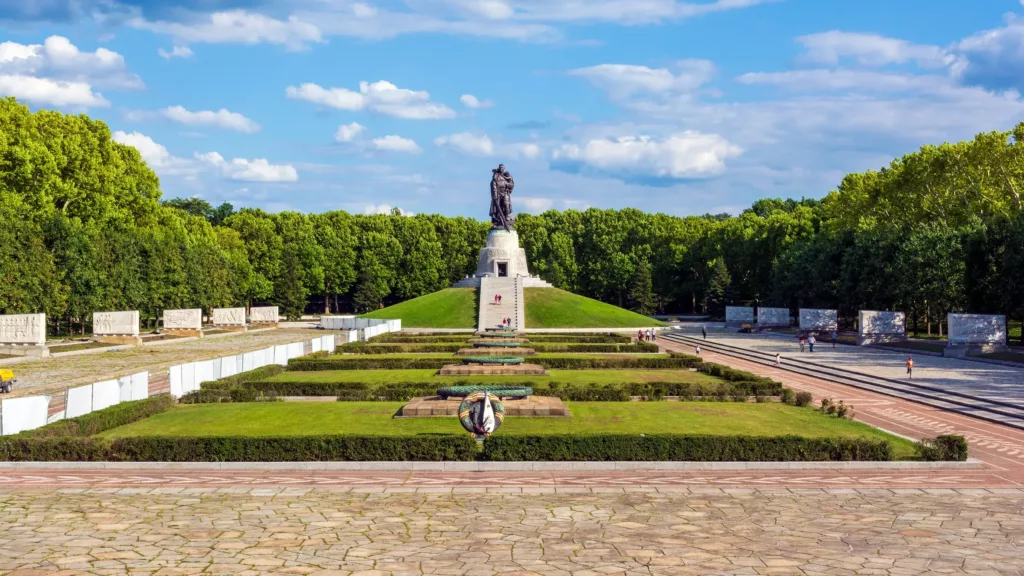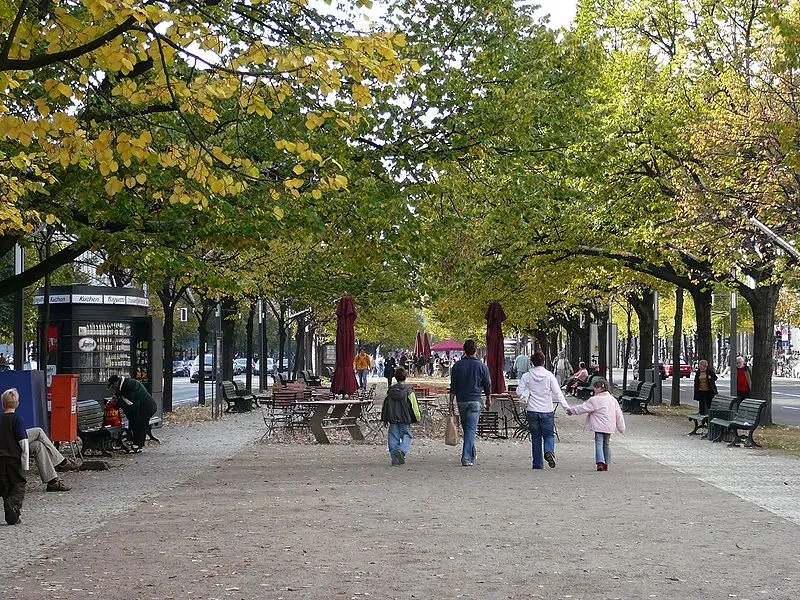As you explore the fascinating city of Berlin, it’s hard to miss the rich history and culture that’s embedded in every corner. From the iconic landmarks and museums to the vibrant nightlife and street art, there’s always something new to discover in this vibrant city. As avid travelers ourselves, we’ve put together a list of the top 14 attractions in Berlin that you simply can’t miss. So pack your bags, grab your camera, and prepare for an unforgettable journey through one of Europe’s most captivating cities.
Table of Contents
The Berlin Wall
For any history buff, a trip to the Berlin Wall should be at the top of their bucket list. The Berlin Wall is an absolute must-see, a stark reminder of the Cold War. Made up of two concrete walls that ran through downtown Berlin between 1961 and 1989, it was an infamous symbol of division between East and West Germany.
Today, visitors can explore preserved segments of the wall along with open-air galleries and memorials dedicated to those who lost their lives or were affected by its existence. You can even retrace your steps along the official “Spreebindung” route, which runs from Schlesischen Tor near East Berlin’s city center to Oberbaumbrücke bridge spanning over the river spree – formerly a no-go area for most during the division.
Explore memorials such as the East Side Gallery on Mühlenstraße comprised of 105 canvases painted directly onto the East German side of what’s now called ‘The Wall’ or visit Marienfelde Refugee Centre museum adorned with photographs and stories of those who attempted to flee throughout its 28 years in power.
There’s much more than meets the eye here – so don’t forget that cameras are a must to capture every beautiful moment! The Berlin Wall is a captivating attraction not only for its significance in world history but also for its creative celebration and preservation of human strength in dire times – so make sure you book your tickets soon!
Checkpoint Charlie
Checkpoint Charlie may not be quite as famous as The Wall in Berlin, but it’s equally important to understand the Cold War. When the city was divided into East and West sectors after World War II, Checkpoint Charlie became one of the few points of entry between the two sides.
The checkpoint acted as an international border for several decades, heavily frequented by Allied soldiers and intelligence agents. The site has been preserved in its original state to remind us that there was a time when insurmountable barriers separated citizens living on either side.
Even today, visitors should be able to get a sense of how historically significant this border crossing was – especially when peace protests used to take place nearby! There are a few remaining guard posts, along with some historical memorabilia for those who want to learn more about this fascinating piece of Cold War history.
No matter the reasons for visiting Berlin, taking a trip over to Checkpoint Charlie is worth it for a deeper insight into that turbulent period in European history.
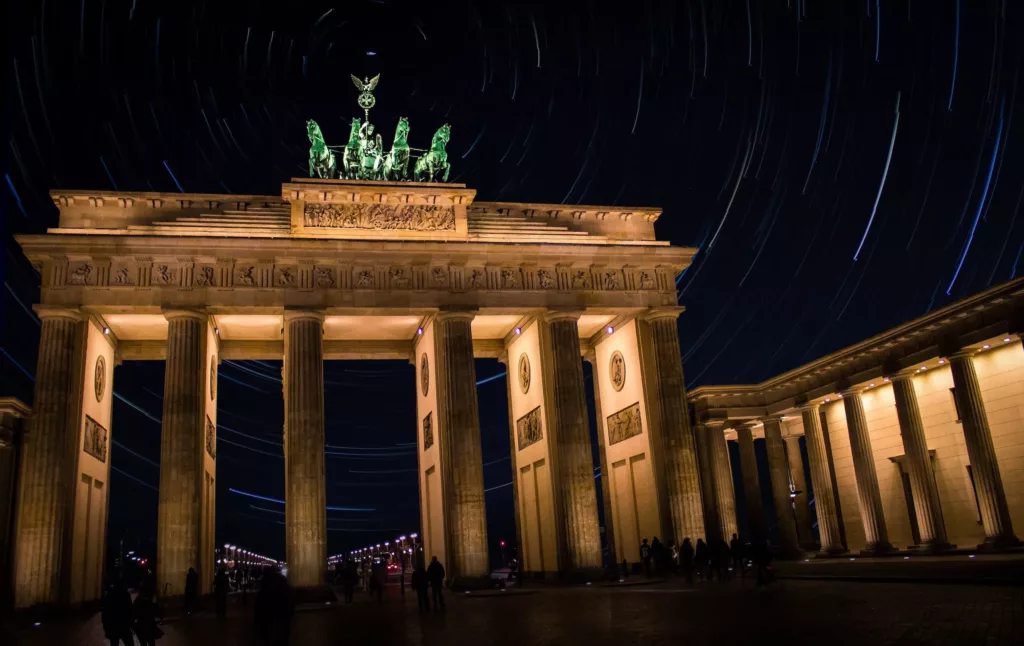
The Brandenburg Gate
If you’ve ever been to Berlin, chances are you’re familiar with the iconic Brandenburg Gate. Located in the heart of the city, Brandenburg Gate has come to symbolize the reunification of Germany and all its citizens. Built in 1791 as a sign of peace and friendship between Prussia and France, it was off limits during the Cold War until it was reopened when Berlin’s wall finally came down in 1989.
Since then, it has hosted numerous events, from concerts and parades to candlelit vigils for peace. As one of Europe’s most treasured monuments, it remains an enduring reminder not just of a country united by one common name but also of a determination that World War III would never happen again.
The Brandenburg Gate maybe just be a structure made from stone and iron. Still, for over two centuries, it has represented so much more – the strength in unity that characterizes today’s Germany.
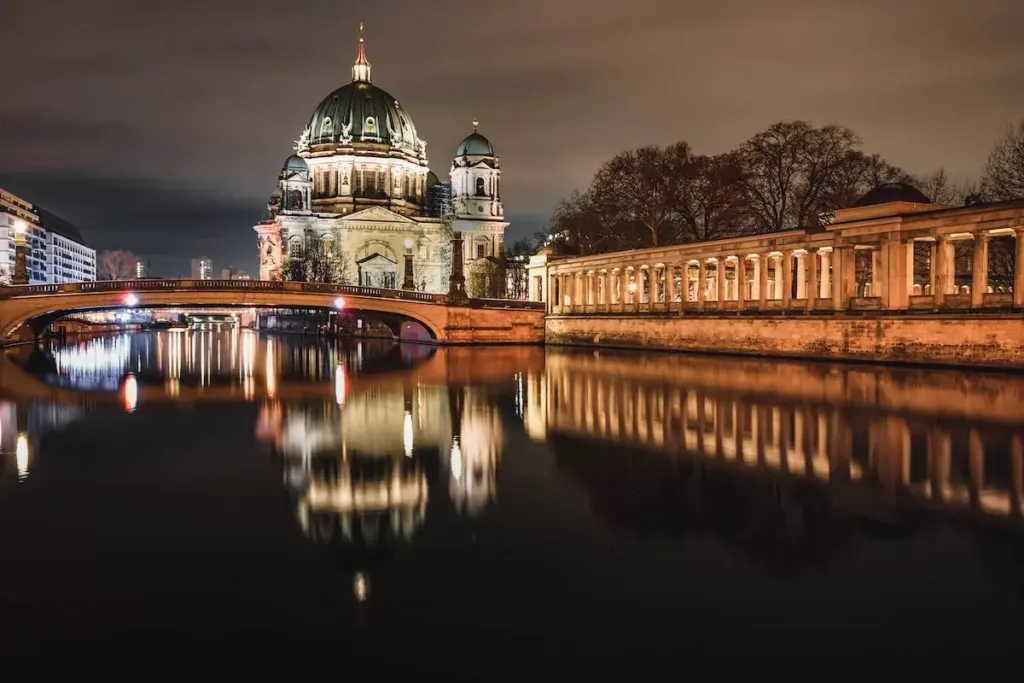
Museum Island
Museum Island in Berlin is one of the city’s most popular tourist attractions, and it’s easy to see why. This small island is situated amidst the River Spree and is home to some of the world’s most famous museums.
With its distinctive neoclassical buildings and rich history, Museum Island will inspire you. First up on your itinerary should be a visit to the Pergamon Museum, which houses ancient antiquities like the Babylonian Ishtar Gate and the Market Gate of Miletus. For a dose of Renaissance art, you’ll want to drop by the Bode Museum, where you can admire works by Vermeer and Cranach, among other greats.
When hunger strikes, you’ll find tons of options nearby — from quaint cafes serving Bavarian specialties to upscale restaurants offering sensational views of the river. Whether you’re an art lover or just in it for the scenery alone, Museum Island is definitely worth a visit!
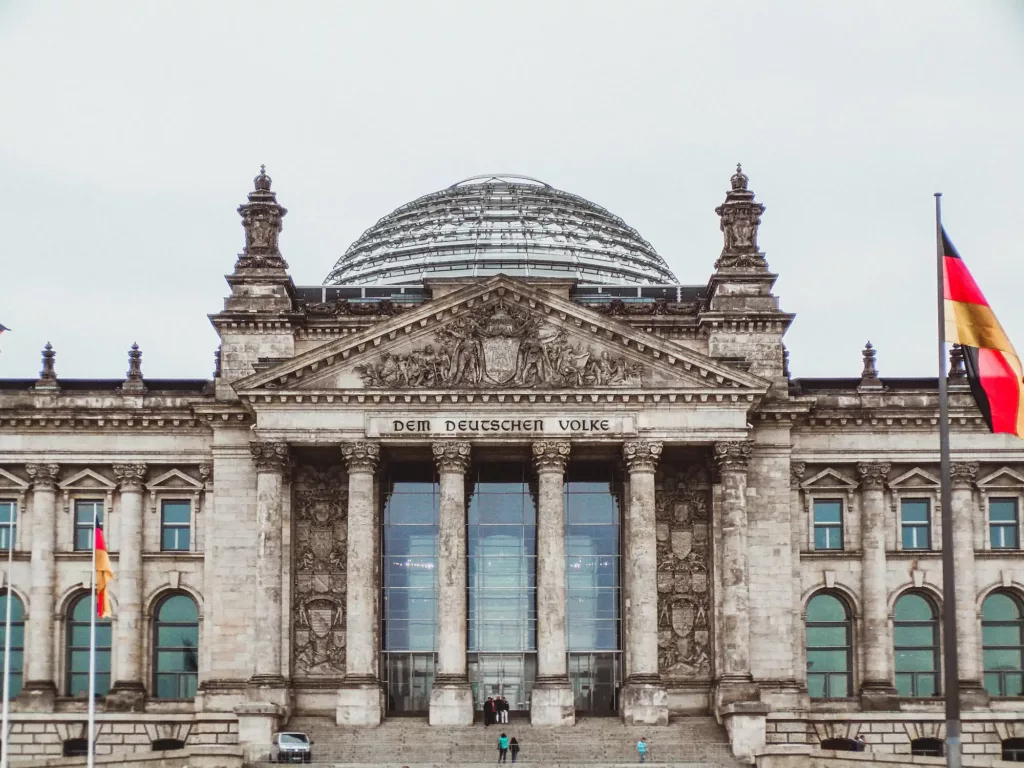
The Reichstag Building
The Reichstag Building is an iconic structure that has played a crucial role in Germany’s political history. Located in the center of Berlin near the Brandenburg Gate, the building was designed by acclaimed architect Paul Wallot in the late 19th century and opened in 1894.
The architecture of the building is impressive; its neoclassical style features an imposing circular dome atop a neo-renaissance façade. However, it’s not just the outside grandeur that gives this building its significance–it is what it represents.
Throughout its long history, this magnificent building has been the seat of many governments, having served as a parliament for both Imperial Germany and the Weimar Republic before becoming home to the current federal government of Germany. Today, visitors can step into a piece of German history while touring through its halls during a sightseeing visit or reviewing political proceedings from the public gallery above the German Bundestag assembly chamber.
The Reichstag Building is sure to be an unforgettable experience for any visitor seeking to connect with their rich cultural heritage or learn more about modern politics in action. Long after its foundation as a place housing significant legislation and political decisions over a century ago, it continues to sit proudly as one of Germany’s most iconic landmarks and symbols of democracy today.
Alexanderplatz
For travelers searching for the hustle and bustle of a big city, Alexanderplatz Berlin is one of the most popular destinations in Germany. Located near several historic locations, including Museum Island and the Nikolaiviertel, the area is great for exploring an afternoon. Besides historical sites, Alexanderplatz also boasts some incredible nightlife.
Visitors can check out clubs, pubs, and bars open late into the night. Something unique to Alexanderplatz is also its proximity to two significant shopping areas – Hackescher Market and Alexa Shopping Mall.
Both options have plenty of stalls selling everything from souvenirs to clothes. For anyone looking for activities during their time in Berlin, Alexanderplatz has it all – art galleries, monuments, street entertainers, and more. Truly an essential part of any trip to Berlin!
German Historical Museum
German Historical Museum is a must-see for anyone interested in the history of Germany. The museum is located in Berlin, and it houses an impressive collection of artifacts that span over two thousand years. From ancient sculptures to modern pieces, this museum has something for everyone.
Visitors can spend days exploring the galleries, divided into chronological eras or particular topics. Highlights include the World War II exhibit showcasing personal items, weapons, and other artifacts from that era. Other popular areas are the Ancient Rome and Renaissance displays, where visitors can see sculptures, artworks, and relics from these periods.
The museum also hosts special events throughout the year, such as lectures and seminars by experts in a variety of fields. These events provide an opportunity to learn more about the country’s history and culture while also gaining insight into current political issues.
In addition to the exhibition halls, the German Historical Museum also has a library that contains rare books and manuscripts, as well as a café where visitors can take a break from their exploration.
Kurfurstendamm
Kurfurstendamm is an area in Berlin that’s just begging to be explored. This iconic boulevard is a bustling hub of activity and culture, making it one of the most popular spots in the city. Whether you’re looking for chic boutiques, world-class restaurants, or cultural attractions, Kurfurstendamm has it all.
Its tree-lined boulevard is the perfect spot to stroll down and admire the beautiful architecture. You’ll find an array of impressive buildings, such as the Kaiser Wilhelm Memorial Church, a stunning example of the neo-Romanesque style. One of the most notable buildings on Kurfurstendamm is Gedachtniskirche, a bombed-out church that serves as a poignant reminder of World War II.
The area is also home to plenty of high-end shops, such as Ka De We, the largest department store in continental Europe. You’ll find everything from designer clothing and cosmetics to gourmet food and fine wines here. Kurfurstendamm is also known for its luxury boutiques, including the flagship stores of many international fashion houses.
Kurfurstendamm isn’t just about shopping – it’s also packed with attractions and entertainment. The famous Zoo Berlin is located here, offering up-close encounters with animals from around the world. There’s also Europa Center, a large shopping mall full of restaurants, cinemas, and cafes.
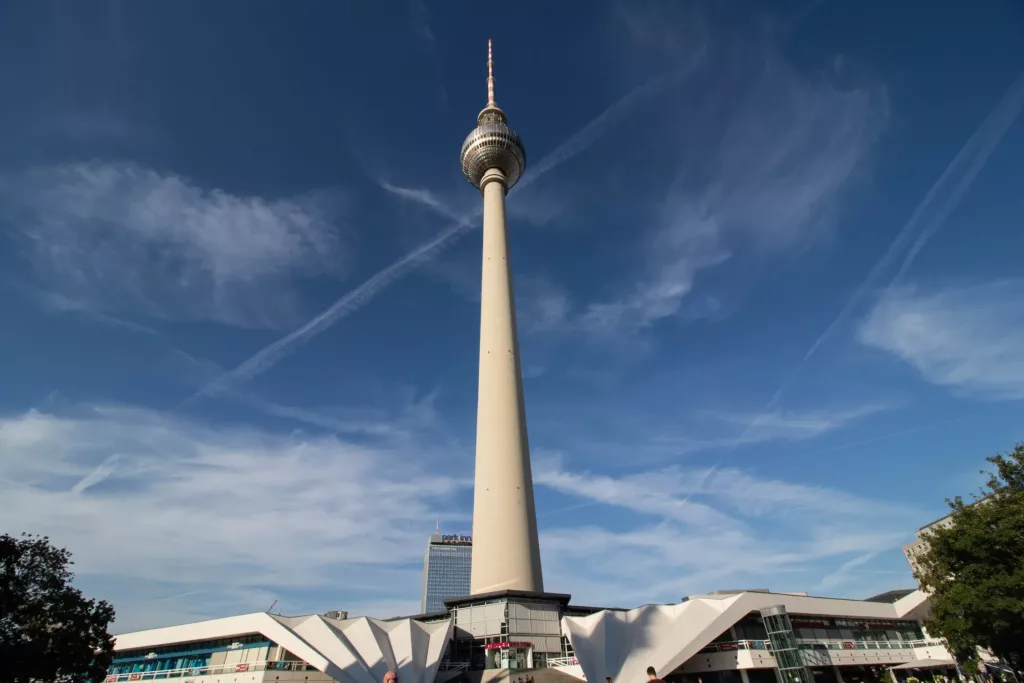
Berlin TV Tower
Berlin TV Tower is an iconic structure located in the German capital of Berlin. It stands 368 meters tall, making it the tallest structure in Germany and one of the tallest towers in Europe. Built between 1965 and 1969, the Berlin TV Tower was initially intended to symbolize East German strength and power. Today, it is a popular tourist attraction, with its observation deck offering sweeping views of the city. Every year, more than a million visitors enjoy the spectacular views from the top. Whether you’re looking for stunning panoramic vistas or want to marvel at this impressive architecture, Berlin TV Tower is well worth a visit!
Tucked away in Berlin’s Mitte district, the TV Tower is easily accessible. You can take a lift to the observation deck, which offers unparalleled views of the city and its surroundings. On a clear day, you can even see as far as Potsdam! If you’re hungry after taking it all in, there’s also a revolving restaurant at the top of the tower, where you can enjoy some delicious local cuisine while admiring the scenery.
No matter how many times you’ve visited, Berlin TV Tower always impresses. From its breathtaking views to its unique architecture, this incredible structure is sure to leave a lasting impression on anyone who takes the time to explore it.
DDR Museum
The DDR Museum is a museum in Berlin, Germany, which documents the history of East Germany. The museum is housed in the former Stasi headquarters.
The museum consists of five floors, each with its own theme:
- On the ground floor, there are exhibits on daily life in East Germany, while the first floor is devoted to propaganda and control.
- The second floor looks at life behind the Iron Curtain, including topics such as escape attempts and exile.
- The third floor examines aspects of work and leisure in East Germanyץ
- The fourth floor covers surveillance and censorship.
- The fifth floor contains an archive and a library.
The DDR Museum is an essential reminder that we should never forget what happens when people are controlled by fear and propaganda. It’s a sobering experience to walk through the exhibits and see how normal people were coerced into doing terrible things just because they were afraid of being punished if they didn’t comply.
Treptower Park
Treptower Park is a large public park in the district of Treptow-Köpenick, Berlin. The park opened in 1987 on the site of a former East German military cemetery. The park is 84 hectares in size and contains a lake, two playgrounds, and an amphitheater.
The centerpiece of the park is the Soviet War Memorial, which was dedicated to the soldiers of the Red Army who died during the Battle of Berlin in 1945. The memorial was designed by Zurab Tsereteli and consisted of a statue of a Russian soldier holding a child over his head. The statue is mounted on top of a granite plinth with an inscription: “To the Soldiers of the Red Army Who Liberated Berlin from Fascism 1945”.
The park also contains several other memorials of the Second World War and East German history, as well as a museum dedicated to DDR (East Germany) culture.
Unter den Linden
Unter den Linden often referred to as the “Avenue of Splendor,” is a tree-lined boulevard in the central Mitte district of Berlin, Germany. Running from Brandenburg Gate to Pariser Platz, it is one of the most famous and beautiful streets in Europe.
First laid out in 1647 by Frederick William, Elector of Brandenburg, Unter den Linden soon became the most fashionable street in Berlin. Many of the city’s important buildings are located along its length, including the Humboldt University, Staatsoper Unter den Linden, and Berlin Cathedral. The avenue was also home to many prestigious shops and restaurants.
Today, Unter den Linden remains one of Berlin’s most popular tourist destinations, with visitors coming to admire its elegant architecture and stunning gardens.
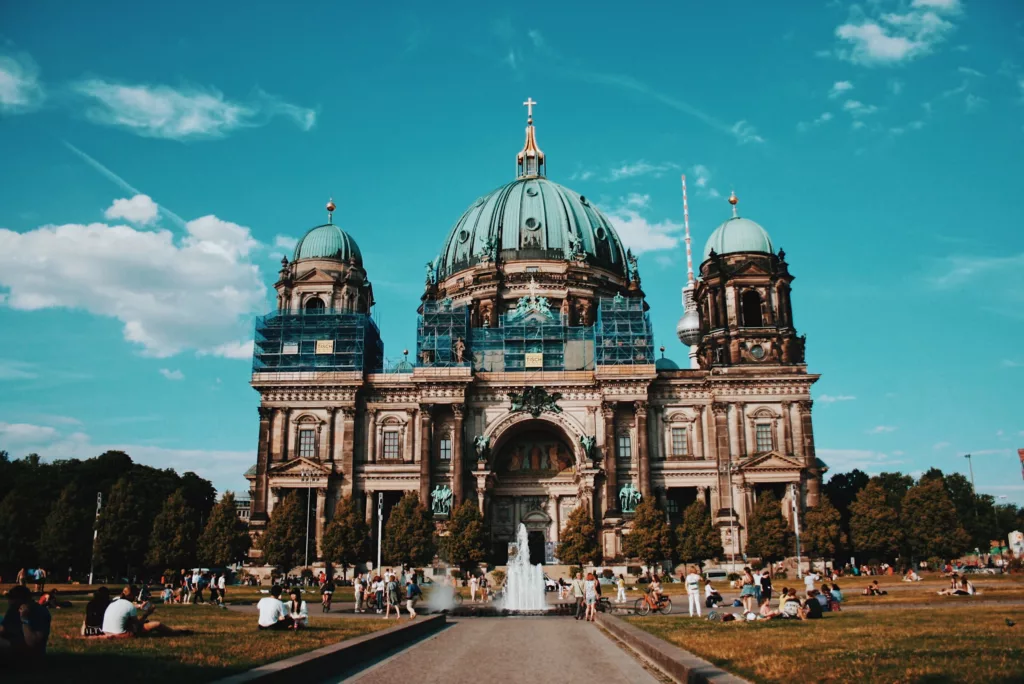
Berlin Cathedral
The Berlin Cathedral is a Protestant church in Berlin, Germany. It is the largest church in the city and one of the most important landmarks of German history. The current building was finished in 1905 and is a mix of different styles, including Romanesque, Gothic, Renaissance, and Baroque.
The Berlin Cathedral has been damaged by fire and war several times over the years. The latest restoration project began in 1999 and was finally completed in 2013. Visitors to the cathedral can see exhibitions of its history and art and climb to the top of the tower for a view over Berlin.
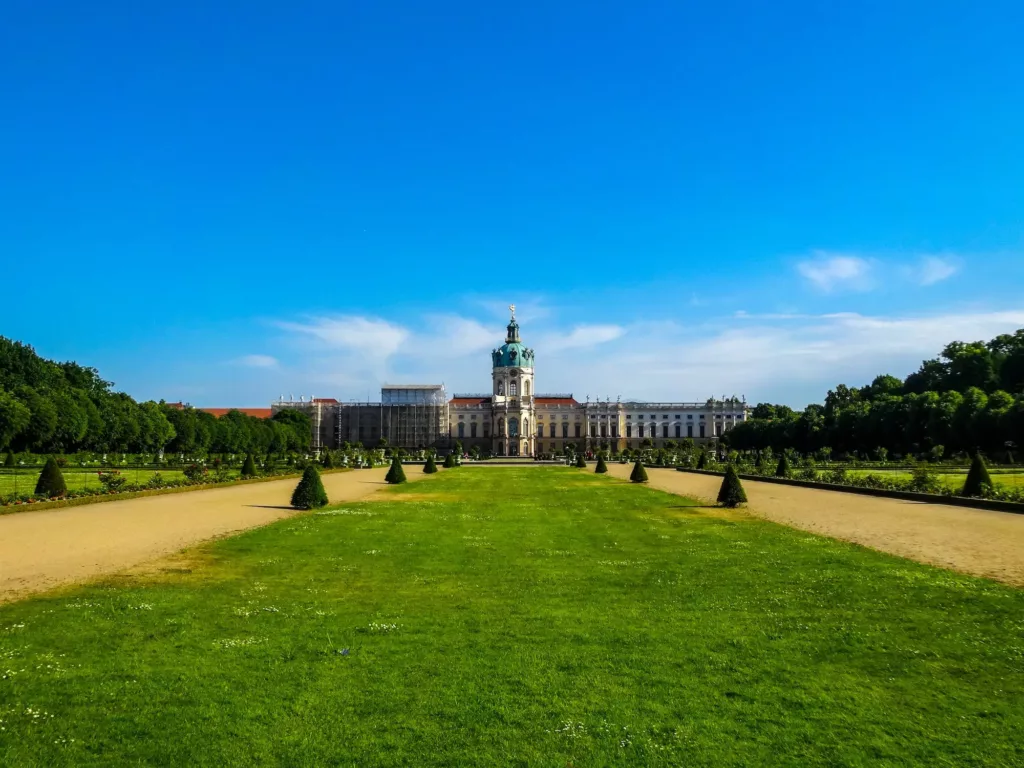
Charlottenburg Palace
Charlottenburg Palace is a beautiful palace located in the Charlottenburg district of Berlin, Germany. It was originally built in 1695 as a summer home for Sophie Charlotte, wife of Frederick I, Elector of Brandenburg. The palace has been expanded and renovated over the years and now features splendid Baroque and Rococo interiors and an impressive art collection.
Charlottenburg Palace is open to the public and makes for a wonderful day trip from Berlin. Visitors can explore the palace’s many rooms and gardens and admire its stunning architecture and decorations. There is also an on-site cafe where visitors can relax after their tour.
FAQ
What is Berlin known for as a tourist destination?
Berlin is known for its rich culture and history. There are many museums, art galleries, and historical landmarks to visit in the city. Additionally, Berlin is home to a vibrant nightlife scene, with plenty of clubs and bars to choose from.
Should I visit Berlin or Munich?
There is no definitive answer, as both cities have a lot to offer tourists. Berling is home to some of the most stunning architecture in the world, while Munich is known for its lively nightlife and beer culture. Ultimately, it depends on what you are looking for as a tourist.
What are the key attractions in Berlin for 3 days?
There are many things to do in Berlin in just three days. You could visit some of the city’s famous landmarks like the Brandenburg Gate, Reichstag Building, and Checkpoint Charlie. You could also check out some of the museums, like the Pergamon Museum or Deutsches Historisches Museum. And don’t forget to explore the city’s lively nightlife!
Is Berlin worth visiting (Personal opinion) ?
Yes, Berlin is definitely worth visiting! With its rich history and abundance of cultural experiences, there’s something for everyone in this vibrant city. From the world-famous Brandenburg Gate to the lively bars and clubs of the Kreuzberg district, Berlin has something to offer everyone. Added bonus: it’s also a great value destination compared to other European capitals.
